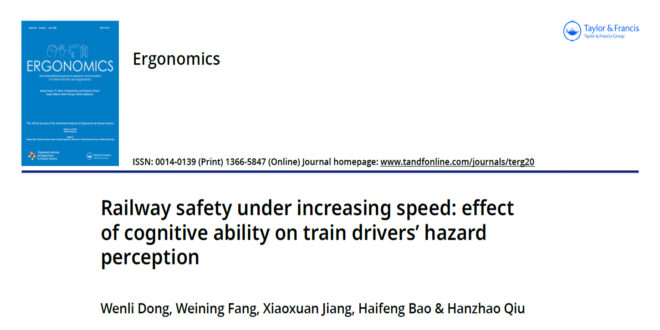Increasing speeds in high-speed rail heighten safety concerns, particularly as foreign object detection technologies remain limited under adverse conditions. train drivers, as the final
safeguard, must accurately perceive and respond to hazards with reduced reaction margins. this study examines how four speed classes and three cognitive abilities—attention, reaction, and
learning—affect hazard perception (hP) using a high-fidelity hazard perception test (hPt) developed in Unity 3D. thirty participants completed the hPt, with performance assessed via
response time and two signal detection theory indicators (sensitivity and response bias). Results show that higher speeds shorten hP response times, which seemingly indicates improved hP;
however, their negative impact on sensitivity and response bias suggests reduced accuracy and cautiousness in the hP process. these findings highlight the importance of targeted cognitive
training, advanced cognitive assistant systems, and adaptive cabin designs in mitigating speed-induced risks and improving safety in high-speed rail operations.
Wenli Dong, Weining Fang, Xiaoxuan Jiang, Haifeng Bao & Hanzhao Qiu.Railway safety under increasing speed: effect of cognitive ability on train drivers’ hazard perception.Ergonomics.Received 28 Oct 2024, Accepted 18 Apr 2025, Published online: 09 May 2025. https://doi.org/10.1080/00140139.2025.2499212
 复杂系统人因与工效学研究所
复杂系统人因与工效学研究所

